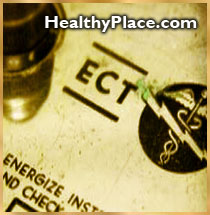My Turn: ECT Editorial Casts Shadow on Author and JAMA's Credibility
Tuesday, March 20, 2001
by Leye Jeannette Chrzanowski
Copyright © The Disability News Service, Inc.
Is Electroconvulsive therapy (ECT) now safe and effective as indicated in a March 14, 2001, editorial published in the Journal of the American Medical Association (JAMA)? The author, JAMA's Deputy Editor Richard Glass, MD, asserts ECT is effective, safe, and no longer abused, and thus time to bring ECT out of the shadows. Glass fails to sway ECT critics. They are incensed that JAMA would publish such a questionable report, and remain unconvinced ECT is the harmless panacea he describes. Critics assert Glass's editorial makes erroneous assumptions, excludes important information, and ignores people who have experienced adverse effects after receiving ECT. They conclude ECT remains ineffective, abused and unsafe.
What is ECT?
According to the National Institutes of Mental Health (NIMH), ECT, sometimes more commonly referred to as shock treatment, involves producing a seizure in the brain of a patient under general anesthesia by applying electrical stimulation to the brain through electrodes placed on the scalp. According to NIMH, "Repeated treatments are necessary to achieve the most complete antidepressant response." People of all ages receive ECT -- even young children.
The Effects
 ECT has been known to cause epilepsy, brain damage, memory loss, stroke, heart attacks and even death.
ECT has been known to cause epilepsy, brain damage, memory loss, stroke, heart attacks and even death.
Glass asserts ECT earned a bad reputation in the mid-20th Century, when shock treatments were abused and overused. He also blames the movie One Flew Over the Cuckoo's Nest for contributing to an "erroneous view of ECT as a punitive, painful, and assaultive procedure used by authorities to control inconvenient creativity."
"That reputation was enhanced by the immediate adverse effects of bitten tongues and even fractured bones and teeth caused by the induction of generalized seizures, and the painful effects of electroshocks administered without anesthesia when they did not successfully induce a seizure with loss of consciousness," he writes.
"Richard Glass makes some very erroneous assumptions in this editorial, and it leaves me wondering if he really knows ECT research at all," says freelance journalist Juli Lawrence, MA, BS, BA, who received ECT in July 1994 for severe depression. Lawrence also operates an Internet Web site http://www.ect.org , which contains a vast amount of ECT information. She accumulated the articles and journal entries -- both pro and con -- after spending years researching ECT.
"He lists a few reasons that ECT is controversial, but ignores what every ECT researcher tends to ignore -- patient feedback. That has been the modus operandi of the entire ECT industry from the beginning, although it seems to be currently in vogue to say, `Well, yes, we admit ECT was misused in the past, but it's fixed today,'" adds Lawrence.
"It is disturbing that such a respected source as the Journal of the American Medical Association sees fit to describe ECT as `an effective and safe treatment,' given the fact that a significant number of people have been permanently disabled by it," says Joseph A. Rogers, executive director of the National Mental Health Consumers' Self-Help Clearinghouse in Philadelphia.
To bolster his opinion, Glass relies on the most recent task force report by the American Psychiatric Association (APA) committee on electroconvulsive therapy. First published in 1990, the 2001 edition of The Practice of ECT: Recommendations for Treatment, Training, and Privileging concludes ECT is a safe and effective treatment for severe major depression. Glass writes the committee noted that after receiving ECT, people may experience "a variable but usually brief period of disorientation," or some retrograde amnesia immediately after the ECT seizure is induced, which usually decreases with time. Glass adds that some people may experience a persistent loss of memory of events that happened directly before and after they received the ECT. Anterograde amnesia, forgetting learned information, may also occur during and following ECT, but is resolved in a few weeks, according to Glass.
"Importantly, there is no objective evidence that ECT has any long-term effect on the capacity to learn and retain new information," writes Glass.
"The APA fact sheet claims that ECT is `no more dangerous than minor surgery under general anesthesia, and may at times be less dangerous than treatment with antidepressant medications,'" adds Rogers. He asserts APA wrongly refers to ECT as "a safe, practically painless procedure" and brain damage a "myth." Rogers says APA minimizes memory problems. "Research to the contrary is ignored," he asserts.
If APA considers brain damage a myth, then it ignores the results of its own task force survey. Some 41 percent of psychiatrist responded, "Yes", and only 26 percent said, "No," when asked, "Is it likely that ECT produces slight or subtle brain damage?"
"As a neurologist and electroencephalographer, I have seen many patients after ECT, and I have no doubt that ECT produces effects identical to those of a head injury," wrote Sydney Samant, MD, in Clinical Psychiatry News, March 1983. Samant concluded that ECT "in effect may be defined as a controlled type of brain damage produced by electrical means."
In the American Journal of Psychiatry, September 1977, John M. Friedberg, MD, writes, "The potency of ECT as an amnestic exceeds that of severe closed head injury with coma. His report, "Shock Treatment, Brain Damage, and Memory Loss: A Neurological Perspective," concluded, "It is surpassed only by prolonged deficiency of thiamine pyrophosphate, bilateral temporal lobectomy, and the accelerated dementias, such as Alzheimer's."
"One reason psychiatrists are unaware that ECT is causing memory loss is that they do not test for it," wrote Peter Sterling, MD, in a January 2000 letter to the editor of Nature. Sterling who works in the department of neuroscience, at University of Pennsylvania, wrote, "Memory loss could be monitored by questioning patients before ECT about early events in their lives and then re-questioning them following each series of ECT. When this was done 50 years ago, memory losses were marked and prolonged. However, no effort has been made since to routinely perform this simple test."
The late Marilyn Rice, founder of the Committee for Truth in Psychiatry, an organization of approximately 500 former ECT recipients was forced to give up her career as a government economist after ECT wiped out her knowledge of economics.
Lawrence says that ECT wiped out a year and a half of memories before she received ECT, and eight months of memories after her shock treatment. She believes it's important to look at ECT from every angle, and offers both perspectives on her Web site. Still, she is not convinced ECT is an effective treatment for depression, but only offers a brief respite.
Glass' editorial does not warn that ECT may cause heart damage or even death.
Last year's controversial U.S. Surgeon General's Mental Health: A Report of the Surgeon General, endorsed the use of ECT, but warned, "However, a recent history of myocardial infarct, irregular cardiac rhythm, or other heart conditions suggests the need for caution due to the risks of general anesthesia and the brief rise in heart rate, blood pressure, and the load on the heart that accompany ECT administration."
"In a large retrospective study of 3,288 patients getting ECT in Monroe County, New York, ECT recipients were found to have an increased death rate from all causes," reports Moira Dolan, MD, in The Effects of Electroconvulsive Therapy, a review of scientific literature on the subject.
She also reports, "The first three years of mandated recording of death within 14 days of ECT in the state of Texas yielded reports of 21 deaths," according to a 1996 report filed by Don Gilbert, Commissioner, Texas Department of Mental Health and Mental Retardation. "Eleven of these were cardiovascular, including massive heart attacks and strokes, three were respiratory, and six were suicides..."
"In this issue of The Journal, Sackeim et al report the results of a multicenter, randomized controlled trial that addressed the important clinical problem of preventing relapse following a course of ECT," Glass writes.
"He fails to mention that in the JAMA study, patients were given an electrical charge so high (double the maximal output) that special machines had to be manufactured, and that this kind of charge is allowed only in research, not in contemporary US practice," counters Lawrence. "Even with that doubled dose, the response rate was dismal. Out of the 290 persons who completed a full ECT series at this high electrical rate, 24 weeks later only 28 were considered to be `in remission' from depression."
Informed Consent
"In his editorial, Dr. Glass does add that some ECT recipients have reported `devastating cognitive consequences' and says that this should be `acknowledged in the informed consent process,'" adds Rogers. "Unfortunately, he does not note that the opportunity for truly informed consent rarely exists now, since many hospitals base their informed consent information on sources such as the American Psychiatric Association fact sheet, which whitewashes the risks of ECT."
In 1998, the U.S. Department of Health and Human Services released the Electroconvulsive Therapy Background Paper prepared by Research-Able, Inc., a Vienna, Virginia, contractor for the Center for Mental Health Services (CMHS). This report indicated that some 43 states regulated the administration of ECT. Nevertheless, its authors concluded that despite state laws regulating the practice of ECT, "physicians and facilities comply neither with the letter nor the spirit of the laws, nor with professional guidelines." The Wisconsin Coalition for Advocacy, for example, reviewed records and conducted in-depth interviews at a psychiatric hospital in Madison, and uncovered...
- coercion to obtain patients' consent;
- failure to honor the requests of people who refused treatment;
- failure to provide patients with sufficient information about the procedure to allow them to make an informed decision; and
- absence of consent to treat people who were mentally unable to give consent.
"The American Psychiatric Association's own consent form doesn't even mention the high relapse rate, and mentions memory loss and cognitive damage as something rare and nearly freakish," adds Lawrence.
Has the abuse and overuse of ECT has declined over the years?
"One only has to look in the courtrooms of New York and spend an hour talking with Paul Henri Thomas, a man who has received as many as 70 forced electroshocks and is fighting against 40 more," asserts Lawrence.
"Or visit the courtrooms in Michigan, where it is against state law to give involuntary ECT to a person who does not have a guardian; yet in the last year, two hospitals and two judges have ignored state law and done it anyway. And you might talk to prominent [British] psychiatrist Dr. Carl Littlejohns, who is a proponent of ECT. Last year he criticized the American practice of ECT saying it was not standardized at all, and called it `most unsettling.' Or talk to the thousands of ECT survivors who say they have devastating, permanent damage and were lied to about the longevity of ECT on depression," advises Lawrence.
The National Mental Health Consumers' Self-Help Clearinghouse's policy is that potential ECT recipients have a right to be educated about the benefits and dangers of the controversial procedure before they make up their minds about it.
The Financial Factor
Many ECT proponents including some cited by Glass do not disclose they may have a financial conflict. For example, he cites Richard D. Weiner, MD, Ph.D., who heads Duke University Medical Center's Electroconvulsive Therapy Service and the APA task force on ECT which petitioned the Food and Drug Administration to lower its classification of ECT machines in 1982.
"As a paid 'consultant' to shock machine companies, Weiner designs virtually all of the shock machines in the United States," asserted Linda Andre, head of the New York City-based Committee for Truth in Psychiatry in 1999. "He admits getting money from shock machine companies but says it's deposited in his `research' account."
Andrew D. Krystal, MD, director of Duke's Sleep Disorder Center, an associate of Weiner's who is frequently cited in pro-ECT journals received $150,036 in funding from the NIMH in fiscal year 1998 to conduct research on improving ECT's effectiveness.
"In this issue of The Journal, Sackeim et al report the results of a multicenter, randomized controlled trial that addressed the important clinical problem of preventing relapse following a course of ECT," writes Glass.
Harold A. Sackeim, Ph.D., is chief of the department of biological psychiatry at the New York Psychiatric Institute, where he directs the ECT research program and co-directs the Late Life Depression Research Clinic. The ECT machines Sackeim used in the research Glass cites above were donated by MECTA, Corporation, one of two US companies that manufacture these devices. MECTA reputation is less than stellar. In 1989, the MECTA, Model D machine was used to give ECT to Imogene Rohovit. As a result, she sustained permanent brain damage and could no longer work. The Iowa nurse and her family successfully sued METCA for an undisclosed amount.
Electroconvulsive Therapy authored by Richard Abrams, MD, a professor of psychiatry at the Chicago Medical School, is the primary reference used by ECT practitioners. Abrams, a member of the editorial board of Convulsive Therapy, has authored numerous articles and books, and lectured extensively on the subject of ECT. Glass does not mention this highly esteemed ECT expert by name, however, APA's 1990 task force report relies heavily on Abrams' ECT expertise. Abrams also rarely mentions his interest in ECT goes beyond his practice, writings and lectures.
"Somatics, Inc. was founded in 1983 by two internationally recognized ECT experts and professors of psychiatry for the purpose of manufacturing and distributing the Thymatron? brief-pulse electroconvulsive therapy instrument," reads a statement on the company's Web site. Missing from the site are the names of the two psychiatrists -- Abrams, and Conrad Swartz, MD, Ph.D., a professor at the University of South Carolina, an ECT practitioner, who writes extensively about ECT, and also designs ECT machines and other related devices.
For years, Abrams failed to disclose his financial interest in the company. He did not disclose it in his pro-ECT article, "The Treatment That Will not Die," published in the academic journal Psychiatric Clinics. When journalist David Cauchon interviewed an editor at Oxford University Press, the publisher of his book, she claimed Abrams had never disclosed his financial interest in Somatics. Cauchon reveals this information in his article "Doctor's Financial Stake in Shock Therapy" published in USA Today, December 6, 1995. (A financial disclosure is now included.)
"Abrams says it's ridiculous to think his ownership of a shock machine company may create a conflict of interest," wrote Cauchon. In the article, Arthur Caplan, director of the Center for Bioethics at the University of Pennsylvania, chides Abrams and Swartz for failing to disclose their financial interest in Somatics, when they lecture or write about ECT. Caplan told Cauchon Abrams and Swartz should "absolutely, without a doubt, disclose their ownership in all their publications," and also on informed consent forms.
Psychiatrists find insurance programs, including federal programs such as Medicare and Medicaid, are willing to pay for less costly shock treatments than for psychotherapy sessions.
"With the insurance companies there isn't a limit [for ECT] like there is for psychotherapy," Gary Litovitz told Sandra Boodman in an interview for her article, "Electric Shock...It's Back" published in The Washington Post, September 24, 1996. "That's because it's a concrete treatment they can get their hands around. We have not run into a situation where a managed care company cut us off prematurely," stated the medical director of Dominion Hospital, a private 100-bed psychiatric facility in Falls Church, Virginia.
"The number of shock treatments in Ontario's community hospitals has more than doubled in the last ten years, Ministry of Health statistics now show," writes Maria Bohuslawsky in The Ottawa Citizen, March 19, 2001. She reports that 40 percent of the 2,087 people who received shock treatment from 1996-1997, were older people -- a growing trend. Bohuslawsky writes that those on both sides of the ECT issue agree that "the trend is partly due to a push for shorter hospital stays: As a short-term treatment, electroshock works faster than antidepressant drugs."
The People Factor
"Neither congressional hearings nor other government proceedings have ever heard from shock survivors and other opponents of shock in representative numbers," states the National Council on Disability in From Privileges to Rights: People labeled With Psychiatric Disabilities Speak for Themselves, a 2000 report the federal agency prepared for the president and Congress. "More often, the proponents of shock have either authored the reports or had major involvement in writing them, often without disclosing conflicts of interest (such as financial involvement with the manufacturers of shock machines), while opponents of shock treatment have been excluded from the process."
"Dr. Glass says it's time for ECT to come out of the shadows," asserts Lawrence. "I've got news for him -- it's out, but not always in the positive light he seems to want. Every day I hear from new people who now consider themselves survivors of ECT. When these patients try and talk to their doctors about their complaints, they are simply ignored or met with scorn. That's what is in the shadows, and it's because the industry refuses to recognize their experiences."
ECT critics raise legitimate concerns which Glass omits from his editorial. The absence of such information, which practitioners and the public have a right to know, casts a dark shadow on Glass's editorial and the Journal of the American Medical Association's credibility.
next: New Hampshire Considers Banning ECT on Children
~ all Shocked! ECT articles
~ depression library articles
~ all articles on depression
APA Reference
Staff, H.
(2001, March 20). My Turn: ECT Editorial Casts Shadow on Author and JAMA's Credibility, HealthyPlace. Retrieved
on 2025, December 19 from https://www.healthyplace.com/depression/articles/my-turn-ect-editorial-casts-shadow-on-author-and-jamas-credibility



